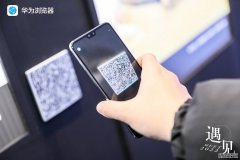2019高端精品推荐 第三套人民币
重庆荣宝堂拍卖有限公司,为藏品强大的传播效应向各位买家推荐经国家一级鉴定专家甄选的艺术珍品,为藏家牵线搭桥,让千百件艺术珍品价值被发掘与重视,在拍卖会上得以高价成交
Chongqing Rongbaotang Auction Co., Ltd. recommends art treasures selected by experts of national first-level appraisal to buyers for their strong dissemination effect. It is also a bridge for collectors, so that thousands of art treasures can be excavated and valued, and high-priced transactions can be concluded at auction.
纸币,增加了1角、2角、5角和1元四种金属币,保留了1分、2分、5分纸币。
中国人民银行"字样。第三套人民币1962年4月15日发行枣红色1角纸币起,到2000年7月1日停止流通,前后历时38年。
第三套人民币先后共发行7种面额、8种原版、9种票券。如果按冠号、印制工艺和钞纸的不同,至少可细分为24种。

The third set of RMB was issued by the People's Bank of China on April 15, 1962. It is equal to the second set of Renminbi and mixed with it in the market. Compared with the second set of RMB, this set of RMB cancelled three yuan notes, increased four kinds of metal coins, including one dime, two dimes, fifty dimes and one yuan, and retained one, two and five cent notes.
The six words "People's Bank of China" in banknotes are written by Mr. Ma Wenwei. The seals on both sides of the ticket are "Presidential Seal" and "Vice Presidential Seal". On the back of the note are printed the words "People's Bank of China" written in Pinyin, Mongolian, Uygur, Tibetan and Zhuang languages. The third set of RMB was issued on April 15, 1962 and stopped circulating until July 1, 2000. It lasted 38 years.
The third set of RMB has issued seven denominations, eight original versions and nine vouchers. According to the different crown number, printing process and banknote paper, it can be divided into at least 24 kinds.

第三套人民币从1955年就开始组织调查,制定方案。1959年1月23日,中国人民银行总行第一次向国务院上报关于更换新版人民币的请示,2月14日,又将新版人民币设计画稿的主题思想上报中央政治局各位领导审阅,周总理作了十分详细认真的批示,提出了很多意见。在中央美术学院和中央工艺美术学院专家罗工柳、王式廓、周令钊、侯一民、陈若菊、邓澎等主持下,组成由印制系统专业技术人员张作栋、石大振、贾鸿勋、刘延年、沈乃镕等参加的设计绘制小组。经过美术专家和印制专业技术人员的密切合作,反复修改,设计出了新方案。1959年6月6日,中国人民银行总行再次上报设计修改稿。
The third set of RMB has been organizing investigations and formulating plans since 1955. On January 23, 1959, the head office of the People's Bank of China submitted to the State Council for the first time an invitation for the replacement of the new version of RMB. On February 14, it also submitted the theme of the new version of RMB design drawings to the leaders of the Political Bureau of the Central Committee for examination. Premier Zhou gave very detailed and serious instructions and put forward many opinions. Under the chairmanship of Luo Gongliu, Wang Zhiguo, Zhou Lingzhao, Hou Yimin, Chen Ruoju and Deng Peng, experts from the Central Academy of Fine Arts and the Central Academy of Arts and Crafts, a design and drawing group composed of Zhang Choodong, Shi Dazhen, Jia Hongxun, Liu Yannian and Shen Nairong, who are professionals and technicians of the printing system, was formed. Through the close cooperation of art experts and printing professional technicians, the new scheme has been designed after repeated revisions. On June 6, 1959, the head office of the People's Bank of China again submitted a revised draft of the design.

第三套人民币
During this period, except for 10 yuan vouchers and 50 yuan vouchers, the design schemes of other denominations of vouchers were approved and put into production one after another. Because the front and back patterns and watermarking contents of the 10 yuan coupon were not determined, the scheme was revised repeatedly until June 18, 1965, and the year number was changed to "1965"; and the 5 yuan coupon was not finalized until July 24, 1972, because Premier Zhou put forward the opinion of "whether to use a light industry in the corner coupon" when approving the design draft in 1959. Only the design draft is submitted and approved by the State Council on July 26. So the par year was changed to 1972. The line names of the third set of Chinese characters in Renminbi are still in Ma Wenwei's style, but the face value of Chinese characters has been changed to printed Song characters. The Third Set of Renminbi

第三套人民币雕刻。从此结束了我国货币生产依赖外国的历史。
According to the design pattern approved by the State Council, the head office of the People's Bank of China organized Wu Pengyue, Ju Wenjun, Lin Wenyi, Liu Guodong, Zhao Yayun, Su Xihua, Wang Xuelin, Gao Zengji, Jia Xufeng, Zhang Yongxin and other famous sculptors to fight together to give full play to their respective sculpture expertise and combine manual sculpture with machine sculpture to make the first place possible. The three sets of Renminbi are more artistic and anti-counterfeiting. Their representative works are Wu Pengyue's 5-yuan coupon front steelmakers and Ju Wenjun's 1-yuan coupon back Tianshan grazing map. In order to print the third set of Renminbi with high quality and speed and meet the needs of market circulation in time, engineers and technicians of the printing system, Shen Yongbin, Li Genxu, Liu Zhengxiang, Liu Puqing, Chen Pengnian, Bao Zhenzeng, and other technical personnel of relevant units, worked together to break through the technical difficulties of the printing equipment, and at the same time created our own country. Watermark banknote paper, such as hollow Pentagon coin mixed full-page watermarking, flag Pentagon full-page watermarking and Tiananmen fixed watermarking, are designed by Yuan Rongguang and Zheng Xinchen for the third set of RMB carving. From then on, the history of our country's dependence on foreign countries for money production has ended.

第三套人民币票面设计图案比较集中地反映了当时中国国民经济以农业为基础,以工业为主导,农轻重工并举的方针。在印制工艺上,第三套人民币继承和发扬了第二套人民币的技术传统、风格。制版过程中,精雕细刻,机器和传统的手工相结合,使图案、花纹线条精细;油墨配色合理,色彩新颖、明快;票面纸幅较小,图案美观大方。为了促进工农业发展和商品流通,方便群众使用,经国务院批准,中国人民银行于1962年4月20日开始发行第三套人民币。规定第三套人民币和第二套人民币比价为1:1,即第三套人民币和第二套人民币票面额等值,并在市场上混合流通。
The third set of RMB par design patterns reflects the principle that the national economy of China was based on agriculture, dominated by industry, and that both agriculture and heavy industry were important. In terms of printing technology, the third set of Renminbi inherits and develops the technical tradition and style of the second set of Renminbi. In the process of plate making, fine carving, combination of machine and traditional handwork make the pattern and pattern lines fine; ink matching is reasonable, color is novel and bright; paper size is small, and the pattern is beautiful and generous. With the approval of the State Council, the People's Bank of China began issuing the third set of Renminbi on April 20, 1962, in order to promote the development of industry and agriculture and the circulation of commodities for the convenience of the masses. It stipulates that the ratio of the third set of RMB to the second set of RMB is 1:1, that is, the denomination of the third set of RMB and the second set of RMB is equal, and they are mixed circulated in the market.

中央工艺美术学院的著名教授进行座谈,听取意见。因此,这套人民币的质量有了较大提高。
The Central Committee and the State Council attach great importance to the design and printing of this set of RMB banknotes. Premier Zhou Enlai also gave specific instructions. He pointed out that the original design draft was too large to resemble tickets, too bright and incongruous in color, too general in human image and not prominent in personality. Some tickets should be exchanged for each other. For example, the background of the original 5 yuan coupon is "oil mine", and the background of the original 2 yuan coupon is "open pit coal mine". The two sides should be exchanged for each other. The background of the 5 yuan coupon used as "open pit coal mine" is matched with its front steelmaking background, and the background of the 2 yuan coupon used as "oil mine" and its front. It is more reasonable to set up a complete set of mechanical industry scenarios; the original design of the 1-cent voucher scenario is "cadres participating in labor", considering that students may use more of the 1-cent voucher, they need to change it to "combining education with production and labor"; even there is a Chinese phonetic error in the 1-dollar voucher draft, which Zhou Enlai pointed out and corrected. In the process of sample design, famous professors from the Central Academy of Fine Arts and the Central Academy of Arts and Crafts were invited to hold talks and listen to their opinions. Therefore, the quality of this set of RMB has been greatly improved.

- 上一篇:2019高端精品推荐 双旗币十文
- 下一篇:2019高端精品推荐 大阅兵纪念章
- 新闻
- 房产
- 汽车
- 娱乐
- 体育






















